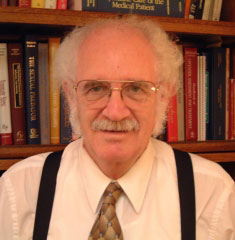One of our staff members is contributing considerably to a News Archiving service at Mu. Any well educated (Masters, PhD or above) users who wish to make comments on news sites, please contact Jim Burton directly rather than using this list, and we can work on maximising view count.
Gene Abel

Dr Gene G. Abel is a psychologist known for raising fear over pedophilia and child sexual abuse, mainly as an attempt to gain publicity for his Stop Child Molestation Book, Abel screening and behaviour-modification ventures. Abel conducts these campaigns through organisations that he set up - the Oakland-based Child Molestation Research and Prevention Institute and the Behavioral Medicine Institute of Atlanta.
Abel is the source of many exaggerative statistics on child sexual abuse and pedophilia. He arrives at these figures through patently bad science. For instance, Marshall and Eccles (1991) pointed out that Abel, in claiming that sex offenders commonly have multiple paraphilias, had counted any offender reporting multiple deviant acts as more than one person, greatly inflating his findings. While Abel's claim was not supported by any other literature, it was nonetheless accepted as gospel by the DSM. A critique of Abel's self-serving assertion that most child molesters are pedophiles is also available.
In 1990, Abel was the recipient of the Society for Sex Therapy and Research Masters and Johnson award. It is unlikely that Abel would earn such an award in light of his activities since 1990.
Commentary
A review of the Stop Child Molestation Book:
- Abel recommends that all parents question their sons at around 6th grade about their sexual fantasies. Any boy who is suspected of having sexual thoughts involving younger children, or who has been sexually touched by an older child or adult, is to be referred to a "sex-specific therapist" who will test him for pedophilic symptoms. The test should be either a sexual interest test (developed by Abel himself, in which the boy examines photographs of children and adults in swimwear while a computer measures visual reaction time), a lie detector test, or a plethysmograph connected to his genitals while he looks at or listens to sexually stimulating material.
- The problem with such tests (aside from their intensely humiliating and stigmatizing effects) is that they have never been validated, a process which would require testing a representative sample of American children to establish norms. In fact, all researchers are agreed that very little is known about normal sexual feelings during childhood and adolescence. To make matters worse, Abel refuses to release data necessary for independent researchers to evaluate his test.
- However, the most chilling part of Abel's book comes when he outlines treatment methods to cure "pedophilia" among boys: separation from other children (possibly removal from the family), monitoring of sexual feelings and behavior by family members and friends who report to the therapist (and sometimes by plethysmograph), high doses of sex drive reducing drugs, covert sensitization, and aversion therapy with ammonia. The last two methods are intended to eliminate particular sexual thoughts by pairing them with pain, fear, or humiliation. Any of these methods may be imposed on the boy for life by the therapist, regardless of his or his parents' wishes.
- Although Abel refers to them as "breakthroughs in testing, medicine, and therapies," students of history will recognize plethysmographs, sex drive reducing drugs, aversion therapy, and covert sensitization as the methods used decades ago to "cure" homosexuality. Mainstream health professionals and the public (even those who disapprove of homosexual behavior) now consider them ineffective, dangerous, and unethical. Numerous accounts show they lead to nightmares, depression, chronic anxiety, self-hatred, and suicidal thoughts among both gay men and children labeled as "deviant." And no wonder: Considering the fact that we know almost nothing about the development of sexual feelings, it is clear that such efforts amount to messing with something we don't understand.
- Like the "expert" doctors and therapists who justified their use on homosexuals, Abel shows no concern for emotional trauma and intense stigma these methods inflict on boys, instead rationalizing such abuse by writing that the protection of normal children takes precedence over the welfare of deviant children. Especially disturbing is the apparent endorsement of this approach by some other leaders in the juvenile sex offender industry-an approach that would create a new class of lepers consisting, presumably, of 5% of all boys.